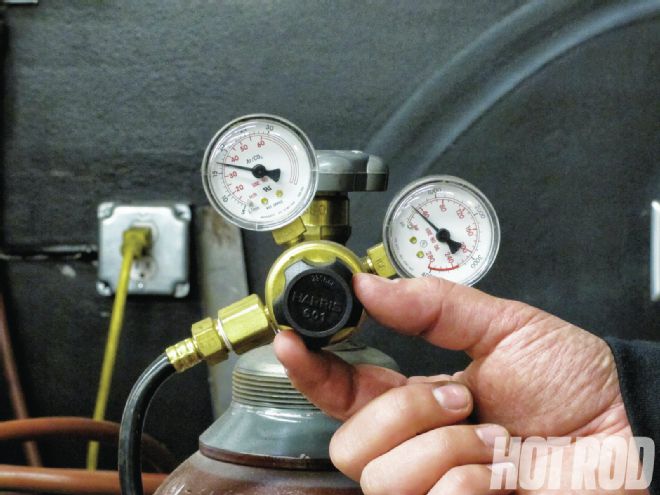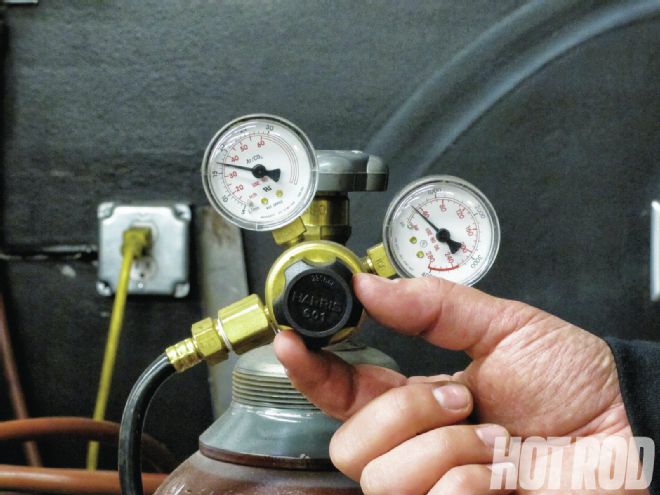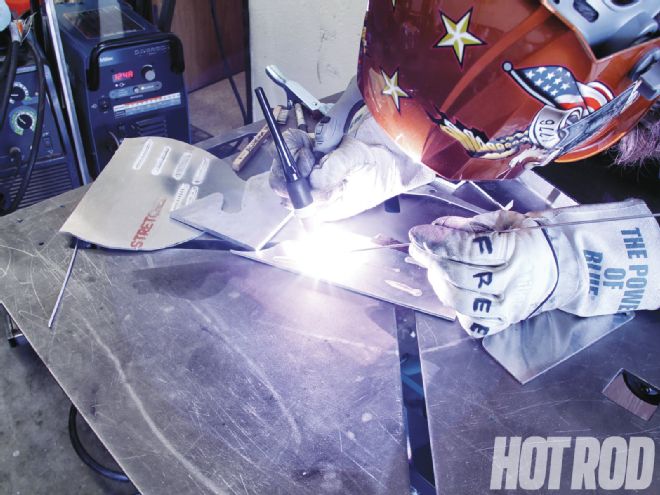
 1.
1.
01] Set the flow of pure argon shielding gas to 16 to 18 cubic feet per hour (CFH) for aluminum that's up to 0.500 inch thick. A percentage of helium can be added for thicker aluminum parts to increase the heat and improve penetration. Increase flow to 20 CFH if airflow is disrupting the weld puddle.
02] Set the machine AC (alternating) current for welding aluminum and DC for preparing the tungsten. Set power output to 1 ampere for every 11000 inch of material thickness. For example, 0.125-inch plate requires 125 amps.
03] Sine or square wave machines require a 332- to 18-inch-diameter pure tungsten electrode with a ball melted on the end. Zirconiated tungsten is best for welding aluminum, but only aluminum.
04] For sheetmetal, use a sharply pointed, 2-percent-ceriated tungsten for all machines.
05] Use a clean disc sander or grinding wheel to sharpen the end like a pencil with a dull point.
06] Remove the surface oxide coating with a clean stainless-steel brush. Contamination of the work piece will prevent you from making a good weld, so do not use this particular brush for anything other than cleaning aluminum.
07] Although the electron flow from the work to the electrode will partially clean the oxide, you don't want to rely solely on the welder to clean the oil, grease, or moisture from the part. Clean the back side of the part so no impurities are pulled through the aluminum and into the weld puddle. Here you can see the coating burned away around the perimeter of the weld.
 8.
8.
08] Wear thicker gloves when welding aluminum because of the extra heat involved. ER4043 is a general-purpose filler rod to use if you are unsure of the composition of the part. Match the diameter of the filler rod to the thickness of the broken part.